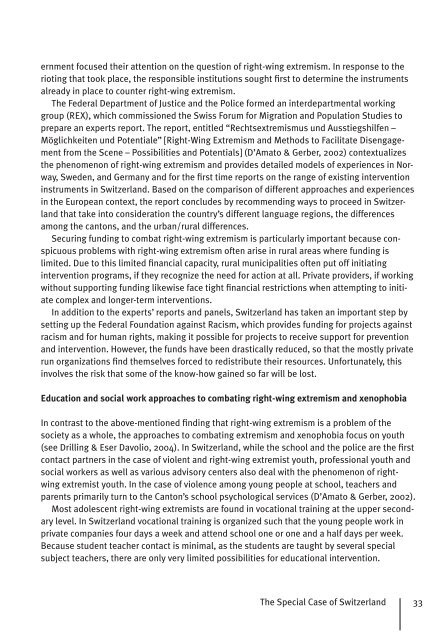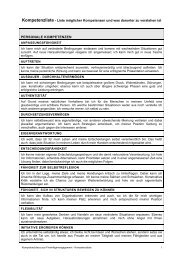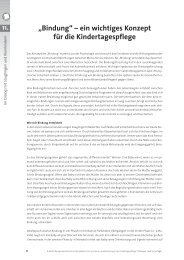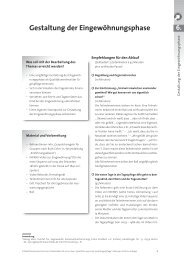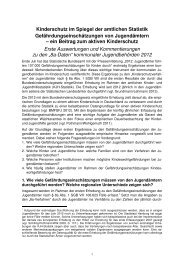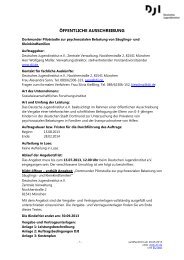Prevention of Right-Wing Extremism, Xenophobia and Racism in ...
Prevention of Right-Wing Extremism, Xenophobia and Racism in ...
Prevention of Right-Wing Extremism, Xenophobia and Racism in ...
Create successful ePaper yourself
Turn your PDF publications into a flip-book with our unique Google optimized e-Paper software.
ernment focused their attention on the question <strong>of</strong> right-w<strong>in</strong>g extremism. In response to the<br />
riot<strong>in</strong>g that took place, the responsible <strong>in</strong>stitutions sought fi rst to determ<strong>in</strong>e the <strong>in</strong>struments<br />
already <strong>in</strong> place to counter right-w<strong>in</strong>g extremism.<br />
The Federal Department <strong>of</strong> Justice <strong>and</strong> the Police formed an <strong>in</strong>terdepartmental work<strong>in</strong>g<br />
group (REX), which commissioned the Swiss Forum for Migration <strong>and</strong> Population Studies to<br />
prepare an experts report. The report, entitled “Rechtsextremismus und Ausstiegshilfen –<br />
Möglichkeiten und Potentiale” [<strong>Right</strong>-<strong>W<strong>in</strong>g</strong> <strong>Extremism</strong> <strong>and</strong> Methods to Facilitate DisengageDisengage-<br />
ment from the Scene – Possibilities <strong>and</strong> Potentials] (D’Amato & Gerber, 2002) contextualizes<br />
the phenomenon <strong>of</strong> right-w<strong>in</strong>g extremism <strong>and</strong> provides detailed models <strong>of</strong> experiences <strong>in</strong> Nor-<br />
way, Sweden, <strong>and</strong> Germany <strong>and</strong> for the fi rst time reports on the range <strong>of</strong> exist<strong>in</strong>g <strong>in</strong>tervention<br />
<strong>in</strong>struments <strong>in</strong> Switzerl<strong>and</strong>. Based on the comparison <strong>of</strong> different approaches <strong>and</strong> experiences<br />
<strong>in</strong> the European context, the report concludes by recommend<strong>in</strong>g ways to proceed <strong>in</strong> Switzer-<br />
l<strong>and</strong> that take <strong>in</strong>to consideration the country’s different language regions, the differences<br />
among the cantons, <strong>and</strong> the urban/rural urban/rural differences.<br />
Secur<strong>in</strong>g fund<strong>in</strong>g to combat right-w<strong>in</strong>g extremism is particularly important because con- con-<br />
spicuous problems with right-w<strong>in</strong>g extremism <strong>of</strong>ten arise <strong>in</strong> rural areas where fund<strong>in</strong>g is<br />
limited. Due to this limited fi nancial capacity, rural municipalities <strong>of</strong>ten put <strong>of</strong>f <strong>in</strong>itiat<strong>in</strong>g<br />
<strong>in</strong>tervention programs, if they recognize the need for action at all. Private providers, if work<strong>in</strong>g<br />
without support<strong>in</strong>g fund<strong>in</strong>g likewise face tight fi nancial restrictions when attempt<strong>in</strong>g to <strong>in</strong>iti-<br />
ate complex <strong>and</strong> longer-term <strong>in</strong>terventions.<br />
In addition to the experts’ reports <strong>and</strong> panels, Switzerl<strong>and</strong> has taken an important step by<br />
sett<strong>in</strong>g up the Federal Foundation aga<strong>in</strong>st <strong>Racism</strong>, which provides fund<strong>in</strong>g for projects aga<strong>in</strong>st<br />
racism <strong>and</strong> for human rights, mak<strong>in</strong>g it possible for projects to receive support for prevention<br />
<strong>and</strong> <strong>in</strong>tervention. However, the funds have been drastically reduced, so that the mostly private<br />
run organizations fi nd themselves forced to redistribute their resources. Unfortunately, this<br />
<strong>in</strong>volves the risk that some <strong>of</strong> the know-how ga<strong>in</strong>ed so far will be lost.<br />
Education <strong>and</strong> social work approaches to combat<strong>in</strong>g right-w<strong>in</strong>g extremism <strong>and</strong> xenophobia<br />
In contrast to the above-mentioned fi nd<strong>in</strong>g that right-w<strong>in</strong>g extremism is a problem <strong>of</strong> the<br />
society as a whole, the approaches to combat<strong>in</strong>g extremism <strong>and</strong> xenophobia focus on youth<br />
(see Drill<strong>in</strong>g & Eser Davolio, 2004). In Switzerl<strong>and</strong>, while the school <strong>and</strong> the police are the fi rst<br />
contact partners <strong>in</strong> the case <strong>of</strong> violent <strong>and</strong> right-w<strong>in</strong>g extremist youth, pr<strong>of</strong>essional youth <strong>and</strong><br />
social workers as well as various advisory centers also deal with the phenomenon <strong>of</strong> right-<br />
w<strong>in</strong>g extremist youth. In the case <strong>of</strong> violence among young people at school, teachers <strong>and</strong><br />
parents primarily turn to the Canton’s school psychological services (D’Amato & Gerber, 2002).<br />
Most adolescent right-w<strong>in</strong>g extremists are found <strong>in</strong> vocational tra<strong>in</strong><strong>in</strong>g at the upper secondsecond- ary level. In Switzerl<strong>and</strong> vocational tra<strong>in</strong><strong>in</strong>g is organized such that the young people work <strong>in</strong><br />
private companies companies four days a week <strong>and</strong> attend school one or one <strong>and</strong> a half days per week.<br />
Because student teacher contact is m<strong>in</strong>imal, as the students are taught by several special<br />
subject teachers, there are only very limited possibilities for educational <strong>in</strong>tervention.<br />
The Special Case <strong>of</strong> Switzerl<strong>and</strong><br />
33


